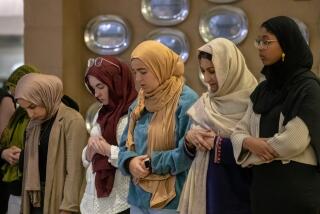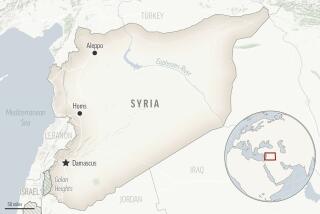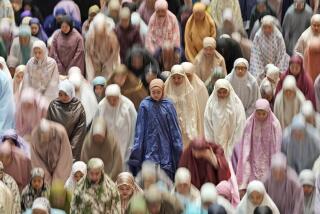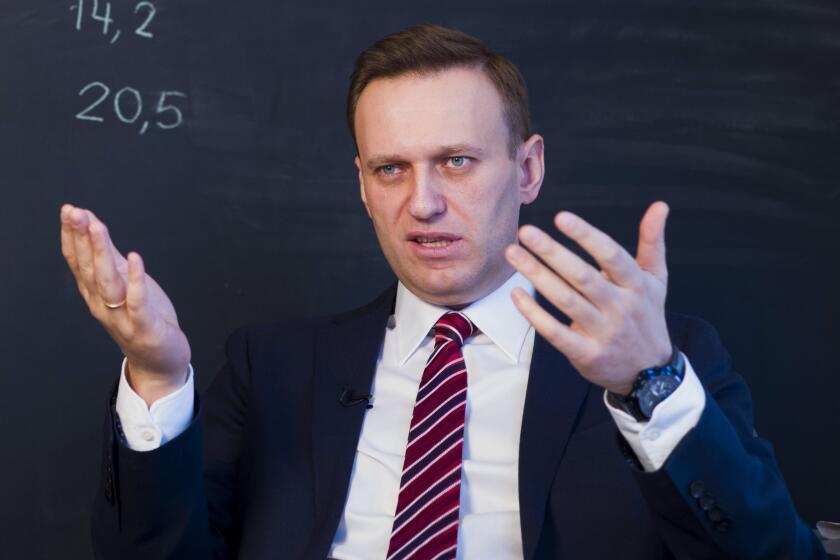9 reported slain in Syrian protests
A battered but still boisterous Syrian opposition movement and a worn-out and increasingly isolated government confronted each other again Friday, days before the start of the emotionally charged holy month of Ramadan.
Massive protests after midday prayers erupted across Syria, including some of the largest seen so far in the symbolically potent northwestern city of Hama, where thousands were killed in a 1982 government crackdown, and the besieged far eastern city of Dair Alzour, on the Euphrates River. Tens of thousands gathered there to call on the international community to take a stand against President Bashar Assad, whose father was responsible for the 1982 bloodshed.
“Your silence is killing us,” was the message protesters posted on social media websites.
At least nine protesters were killed Friday, according to a network of political activists, as Assad’s uniformed and plainclothes forces fired on demonstrators in Dair Alzour, the coastal city of Latakia and the southern city of Dara, where peaceful demonstrations first broke out nearly five months ago.
“The whole city went out in protest, demanding that those responsible for the killings in the past 24 hours are brought to justice,” said an activist in Dair Alzour reached by telephone. “People came out in very big numbers, bigger than ever before, after Wedneday’s and Thursday’s security operation.”
Analysts and activists are gearing up for a potential surge in political violence during Ramadan, expected to start Monday, when observant Muslims abide by a dawn-to-dusk fast and head to mosques daily for additional prayers. Activists and diplomats anticipate possibly decisive events during Ramadan.
“I think the month of Ramadan will indeed be a turning point for the revolution,” said Ammar Abdul-Hamid, a Syrian opposition activist and dissident in the United States. “During Ramadan, every day will likely be a Friday, and Assad’s security forces, army troops and death squads will have tremendous difficulty dealing with this situation without resorting to extreme violence. This will be a red Ramadan.”
During 2009 protests in Iran, demonstrations against the government calmed during Ramadan only to pick up momentum afterward, before being quashed by the same combination of brute force, mass arrests and nonstop propaganda that is being employed by Syrian authorities.
The Syrian uprising appears to have been gathering momentum over the last few weeks. Amateur video clips posted on the Internet show endless crowds gathered in the main square of Hama, the fourth-largest city, chanting, “The people want the downfall of the regime!.”
The activist reached in Dair Alzour, who asked that his name not be published, said his city was also already in revolt. “Now I think we will see the city turning into an open sit-in,” he said.
Despite some defections, Syria’s security forces — at least the ones deployed to police protest hot spots — have remained largely loyal. But many wonder whether the stress created by additional daily prayer gatherings and the possibility of continual civil unrest will force the country’s soldiers as well as its various plainclothes security services, known collectively as the mukhabarat, to buckle.
“I think that perhaps we’re on our way to a breaking point,” said a Western diplomat in Damascus, the capital. “When pressed to the breaking point, we might see mutinies in the army and security services.”
Still, analysts cautioned that the opposition has previously raised expectations that were later deflated.
“If one wants to be skeptical,” said the Western diplomat, who spoke on condition of anonymity, “we’ve heard this before, that this Friday and so on will be the breaking point.”
Sandels is a special correspondent.
More to Read
Start your day right
Sign up for Essential California for news, features and recommendations from the L.A. Times and beyond in your inbox six days a week.
You may occasionally receive promotional content from the Los Angeles Times.





